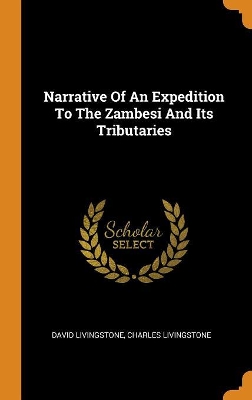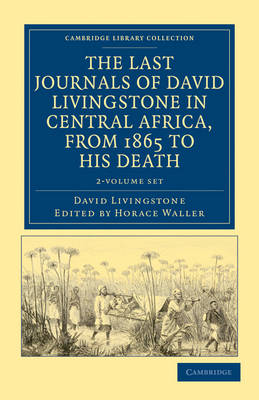Cambridge Library Collection - African Studies
2 primary works • 4 total works
Volume 1
The Last Journals of David Livingstone in Central Africa, from 1865 to his Death: Volume 1
by David Livingstone
Published 15 September 2011
One of the most renowned nineteenth-century British explorers of Africa, David Livingstone (1813-73) was a medical missionary who received the Royal Geographical Society gold medal in 1855. His fame was established by his 1853-6 coast-to-coast exploration of the African interior, and by the best-selling Missionary Travels and Researches in South Africa, published upon his return to England in 1857 (also reissued in this series). Livingstone's last expedition in search of 'the true source of the Nile', undertaken in 1866, forms the core of this two-volume travel diary, published posthumously in 1874. Volume 1 describes his illness-plagued journey from Zanzibar to Ujiji, in Western Tanzania. It also records his 1871 encounter with the New York Herald correspondent and explorer Henry Morton Stanley, who had been dispatched to find him after Livingstone had been cut off from the outside world for so long that he was presumed dead.
Volume 2
The Last Journals of David Livingstone in Central Africa, from 1865 to his Death: Volume 2
by David Livingstone
Published 15 September 2011
One of the most renowned nineteenth-century British explorers of Africa, David Livingstone (1813-73) was a medical missionary who received the Royal Geographical Society gold medal in 1855. His fame was established by his 1853-6 coast-to-coast exploration of the African interior, and by the best-selling Missionary Travels and Researches in South Africa, published upon his return to England in 1857 (also reissued in this series). Livingstone's last expedition in search of 'the true source of the Nile', undertaken in 1866, forms the core of this two-volume travel diary, published posthumously in 1874. Volume 2 describes the last two years of his life, when, after his meeting with the journalist Henry Morton Stanley in 1871, Livingstone insisted on staying in Africa despite his poor health. It includes details about his death and the journey to bring his body back to the British authorities, reported by Livingstone's attendants Chuma and Susi.
Narrative of an Expedition to the Zambesi and Its Tributaries
by David Livingstone and Charles Livingstone
Published 3 February 2010
The success of the Victorian explorer and missionary David Livingstone's first book, Missionary Travels (1857), led to his receiving government funding in 1858 for an expedition up the Zambezi River. The trip was expected to last two years, and was intended to further commercial and scientific as well as missionary aims. However, owing to internal disagreements, illness (including the death of Livingstone's wife), drought and tribal warfare, the explorers' mission took six and a half years and achieved little apart from collecting plant and geological specimens. The upper reaches of the Zambesi proved unnavigable owing to rapids and waterfalls, and the expedition was recalled. This account, published in 1865 by Livingstone (1813-1873) and his younger brother Charles, who had accompanied him, was in part an attempt to excuse the problems which had beset the expedition, and restore Livingstone's reputation in order to gain backing for further ventures.
The Last Journals of David Livingstone in Central Africa, from 1865 to his Death 2 Volume Set
by David Livingstone
Published 15 September 2011
One of the most renowned nineteenth-century British explorers of Africa, David Livingstone (1813-73) was a medical missionary who received the Royal Geographical Society gold medal in 1855. His fame was established by his 1853-6 coast-to-coast exploration of the African interior, and by the best-selling Missionary Travels and Researches in South Africa, published upon his return to England in 1857 (also reissued in this series). Livingstone's last expedition in search of 'the true source of the Nile', undertaken in 1866, forms the core of this two-volume travel diary, published posthumously in 1874. Volume 1 covers his journey from Zanzibar to Ujiji, in Western Tanzania, and his 1871 encounter with the New York Herald correspondent and explorer Henry Morton Stanley. Volume 2 describes the last two years of his life, and includes details of his death and of the journey made to return his body to the British.


